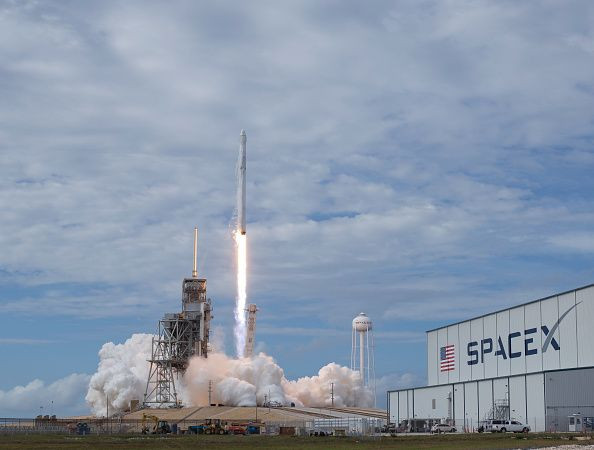SpaceX Launch Of Intelsat 35e Postponed: All You Need To Know About The Telecommunication Satellite

Elon Musk’s interplanetary space travel company, SpaceX, is all set for the launch of its Falcon 9 rocket on Monday — its third launch in a span of less than two weeks. The launch will deliver Intelsat 35e, a commercial communications satellite, to a geostationary transfer orbit, according to a statement by the company.
Unlike its recent launches, SpaceX will not attempt a landing after takeoff with this rocket, probably because of the weight of the payload. Intelsat 35e weighs more than 14,906 lb (6,761 kilograms), making it one of the heaviest satellites SpaceX has ever launched. The satellite is going to be launched into an orbit 23,000 miles above the earth. The two factors combined mean Falcon 9 will use a lot of fuel, so there won’t be much propellant left to perform a controlled first-stage landing.
Read: Watch Live: SpaceX Launch Of Iridium Satellites
The satellite, built by Boeing, is based on the BSS-702MP satellite bus. It has an expected service life of at least fifteen years, and it was bought by Intelsat — the organization tasked with operating a fleet of satellites to provide worldwide broadcasting and telecommunications services as a part of its fleet of EpicNG satellites.
It is a high-throughput satellite. This means Intelsat 35e has a higher rate of successful message delivery over a communication than that of a traditional Fixed-Satellite Service Satellite (used for services such as telephone calls, and television signals) over the same amount of allocated frequency.
Intelsat 35e delivers high performance services in C- and Ku-bands for wireless infrastructure. The International Telecommunication Union has defined these frequency bands for communication systems. C-band was the first band to be used for satellite communications. However, when the band became overloaded (due to the same frequency being used by terrestrial microwave links), satellites were built for the next available frequency band — the Ku-band.
The C-band payload of Intelsat 35e will provide telecommunications services to Europe, Central and Southern Africa, South America, the Caribbean and parts of North America, while the Ku-band transponders will be used for direct-to-home broadcasting to the Caribbean and support for mobile communications and government services in Europe and North Africa, according to NASASpaceflight.com. The payload is powered by two solar wings, each with three panels of ultra triple-junction gallium arsenide solar cells.
Intelsat 35e will replace Intelsat 903, another communications satellite from Intelsat. Monday’s launch marks the thirty-eighth flight of the Falcon 9, the rocket that is carrying the satellite and the forty-third launch overall for SpaceX.
Read: Elon Musk's SpaceX vs. NASA: Who Will Send Tourists To Space First?
While the launch was earlier set to take place Sunday, it was delayed ten seconds before the take-off, reported TechCrunch. The delay was reportedly caused by a computer automated abort. The specific cause of the abort is being investigated. However, the rocket remained completely impact.
SpaceX tweeted Sunday saying the backup launch window for the rocket was set to be opened at 7:37 PM EDT (4:37 PM PDT) Monday.
Falcon 9 and @Intelsat 35e vertical on Pad 39A. Weather is 40% favorable for tonight's launch window which opens at 7:36 p.m. EDT, 23:36 UTC pic.twitter.com/nfVWjUIhAm
— SpaceX (@SpaceX) July 2, 2017
The window is said to last 58 minutes so if something prevents an immediate launch, there would be nearly an hour to reset. John Insprucker, the principal integration engineer for the Falcon 9 and the host of the live stream of Sunday’s launch, said: “This is a computer abort that happened at T-10 seconds where we’re looking at the status of the guidance system and the flight hardware that supports it. It appears that something was out of limits, the computer stopped the countdown before we got into the engine ignition sequence," reported TechCrunch.
© Copyright IBTimes 2024. All rights reserved.





















